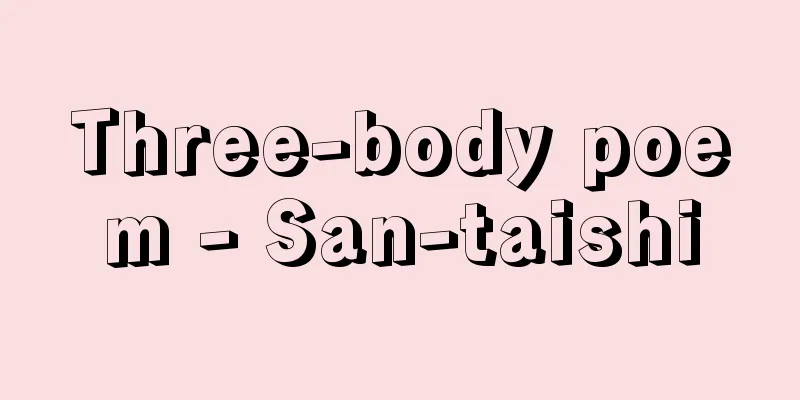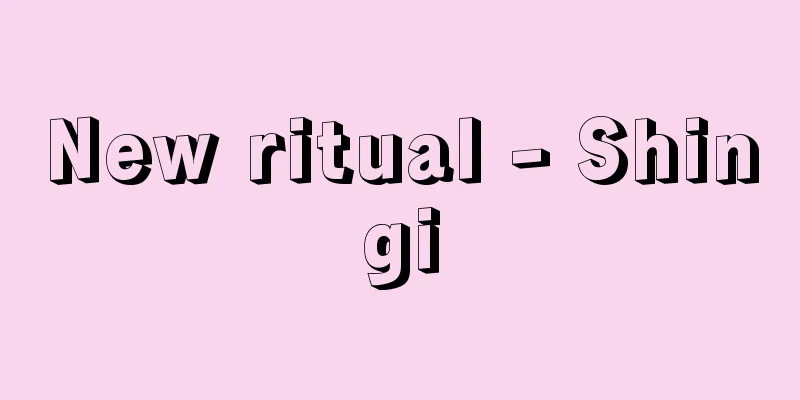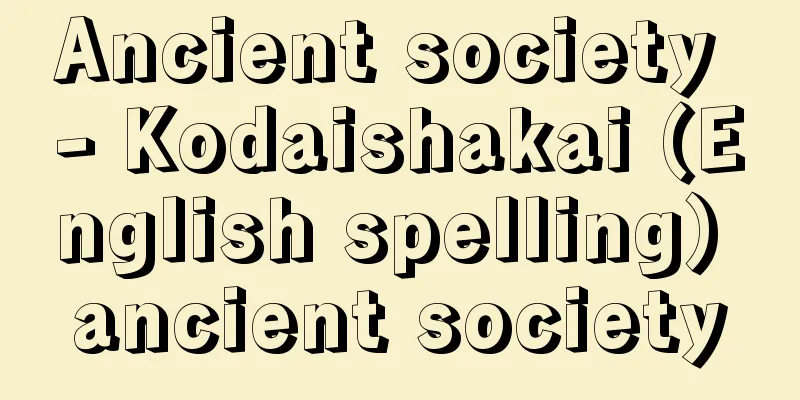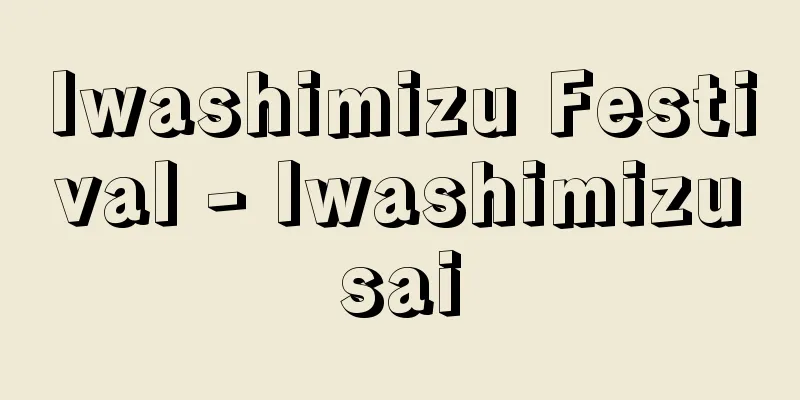Three-body poem - San-taishi

|
This is an anthology of poems from the Tang dynasty in China. It was compiled by Zhou Bi of the Southern Song dynasty. It contains 494 poems by 167 poets from the Tang dynasty, limited to the three forms (san-tai) of seven-character quatrain, seven-character regulated verse, and five-character regulated verse. Each form is classified into a total of 21 "types" according to the structure of the poem and the style of expression, and each is named "connected to reality," "connected to falsehood," "real before, false after," etc., and an explanation is provided. The theory of "real and falsehood" is extremely interesting as a theory of poetic expression. While "Selected Poems of the Tang," which was written later in the Ming dynasty, mainly selected poems from the early Tang and prosperous Tang dynasties that are heroic, valiant, and tragic, this anthology includes many poems from the mid-Tang and late Tang dynasties, such as those by Xu Hun and Du Mu, and values a sense of calm, quiet elegance, or elegance. The three-volume version with annotations by the Yuan dynasty monks Enchi and Pei Yu (originally titled "Annotated Tang Xian Que Qu Santai Shi Fa") is the most widely used, but there is also a twenty-volume version and a six-volume version with annotations by a Qing dynasty monk. In Japan, it was first read and loved by the Zen monks of the Five Mountains during the Muromachi period, and there are many different published versions, with annotations such as the "Santai Shi Sho" by the monk Soin, the "Santai Shi Shokai" by Utsunomiya Ton'an, and in the Meiji period, Noguchi Neisai's "Santai Shi Commentary." [Murakami Tetsumi] “Tetsumi Murakami, “Chinese Classics Selection 29-32, Three Body Poems 1-4” (1978, Asahi Shimbun)” [Reference] | |Volume 1: Written by Zhou Bi, annotated by Enchi, annotated by Pei Yu, published at the end of the Muromachi period, held at the National Diet Library "Annotated Tang Xian Que Qu Three-Style Poetry" Source: Shogakukan Encyclopedia Nipponica About Encyclopedia Nipponica Information | Legend |
|
中国、唐代の詩の選集。編者は南宋(なんそう)の周弼(しゅうひつ)。七言絶句、七言律詩、五言律詩の三つの形式(三体)に限り、唐の167人の作、494首を収める。各形式を詩の構成や表現のスタイルによって、合計21の「格」に分類し、それぞれ「実接」「虚接」「前実後虚」などと名づけて解説を加える。その「虚実」の説は詩の表現の理論としてきわめて興味深い。後の明(みん)代にできた『唐詩選』が雄健悲壮な初唐、盛唐の詩をおもに選んでいるのに対し、許渾(きょこん)、杜牧(とぼく)など中唐、晩唐の詩を多く採録し、平淡閑雅または警抜華麗な感覚を重んずる。元(げん)の僧円至と裴庾(はいゆ)の注を付した三巻本(原題『増註唐賢絶句三体詩法』)がもっとも普及したが、二十巻本、清(しん)の高士奇注の六巻本もある。日本でも室町時代の五山の禅僧たちに始まって広く愛読され、刊本の種類が多く、注釈も僧素隠『三体詩抄』、宇都宮遯菴(とんあん)『三体詩詳解』、明治になって野口寧斎『三体詩評釈』などがある。 [村上哲見] 『村上哲見著『中国古典選29~32 三体詩1~4』(1978・朝日新聞社)』 [参照項目] | |巻1 周弼撰 円至注 裴庾増注 室町時代末刊国立国会図書館所蔵"> 『増註唐賢絶句三体詩法』 出典 小学館 日本大百科全書(ニッポニカ)日本大百科全書(ニッポニカ)について 情報 | 凡例 |
<<: Three Major Incidents Petition Movement - Sandaijikenkenpakuundo
Recommend
gathering
...The endpapers should always be printed vertica...
Samar [island] - Samar
Located in the central Philippines, at the eastern...
Sedum oryzifolium (English name) Sedumoryzifolium
… [Hiroshi Yuasa]. … *Some of the terminology tha...
The Century of Education - The Century of Education
…A private elementary school established as an ex...
Azide
-N=N + =N - Name of the group. When the azide gro...
Garden - That
A type of farmland in ancient and medieval times. ...
No fishing zone - Goldfish
Areas where fishing is prohibited. No-fishing area...
Non-Austronesian (English spelling)
...It is also important to note that the characte...
Writing - Kakimono
1. Something written. A document. To write two let...
Shikahoyo - Four memorial services
A part of a Buddhist ceremony. It consists of four...
Prince Manda
Year of death: April 21, 7th year of Tencho (May 1...
Togo-so - Togo no sho
The estate was the domain of Matsuo Taisha Shrine...
Owl Nebula
A planetary nebula in Ursa Major. It is located n...
Nuclear Magnetic Moment - Electromagnetic Moment
This refers to the magnetic moment of an atomic n...
Ogi Domain - Ogihan
Located in Ogi, Hizen Province (Saga Prefecture),...









